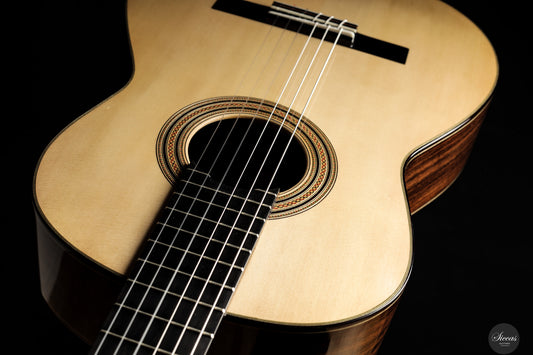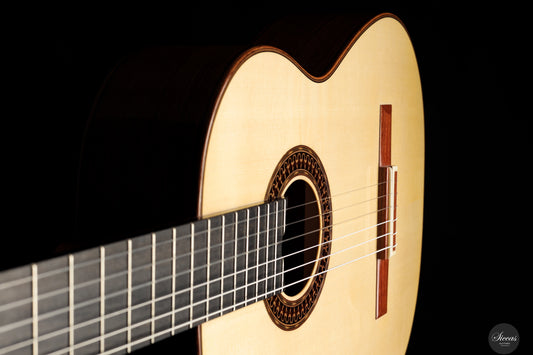Antonio Emilio Pascual Viudes - 1925 No. 159 ON HOLD
Antonio Emilio Pascual Viudes - 1925 No. 159 ON HOLD
Overview
Overview
About the luthier
Antonio Emilio Pascual Viudes Aznar was born in 1883 in Crevillente, Alicante, into a distinguished lineage of Spanish luthiers. His early education in instrument making began under the guidance of his father, but at the age of fourteen, he was sent to Madrid to apprentice with the legendary Manuel Ramírez. From 1897 to 1902, he honed his skills in the Ramírez workshop, later spending a brief period with José Ramírez before returning to Manuel’s atelier, where he remained until 1909.
That year marked a turning point when Pascual Viudes relocated to Buenos Aires, Argentina. There, he found a thriving market for fine instruments and established himself as a prominent luthier, producing guitars, violins, violas, and cellos well into the late 1950s. Despite living and working in Argentina, he continued labeling his instruments with a Madrid origin, likely to reflect the high regard for Spanish-made guitars among local musicians and collectors. His influence in Argentina extended through his mentorship of José B. Romero, ensuring the continuation of his craft and legacy. His passing is estimated to have occurred around 1959, leaving behind an enduring imprint on the history of classical guitar making.
About the guitar
This remarkable guitar, built in 1925 and bearing the number 159, is a rare and elegant example of Antonio Emilio Pascual Viudes’ craftsmanship. Featuring a spruce top and Indian rosewood back and sides, the instrument is traditionally constructed and finished with French polish. Weighing only 1380 grams and equipped with beautiful antique tuners, it is a lightweight and highly resonant guitar with an unmistakable historical character. Pascual’s guitars are distinctive in their craftsmanship. They reflect his Madrid training, with strong Manuel Ramírez elements, but also his own artistic flourishes. His instruments are often lavishly decorated, with artistic rosettes, headstocks, and detailed labels. Pascual Viudes deserves to stand alongside the famous names of Santos Hernández, Manuel Ramírez, and Domingo Esteso—his career shows that excellence in guitar making can thrive even far from the Spanish centers.
Its tonal palette is both elegant and expressive. the instrument offers a wide range of timbral colors and a highly reactive response to right-hand technique. This makes it a particularly sensitive guitar, one that inspires exploration and rewards nuance. The dynamic range is expansive, and the guitar excels in delicate phrasing as well as assertive playing. Playability and overall condition are outstanding considering the instrument’s age, making it an inspiring instrument for performers and collectors alike.
Condition
This nearly century-old guitar is in very good condition and structurally sound. It shows signs of age and careful repair, all of which have been professionally executed and are stable. There is a crack on the top running through the center above the main brace, which has been repaired and stabilized. Two additional cracks are present at the sides of the fingerboard, a very common occurrence on instruments of this age, which are supported by a transversal brace beneath the fretboard as part of the original bracing. On the back, two small cracks can be found at the upper bout. All of these repairs are secure, leaving the instrument musically fully responsive and well preserved despite its age.
| Luthier: | Antonio Emilio Pascual Viudes |
| Construction year: | 1925 |
| Construction type: | Traditional |
| Top: | Spruce |
| Back and sides: | Indian rosewood |
| Finish: | French polish |
| Air body frequency: | G / G # |
| Scale: | 648 mm |
| Nut: | 50.5 mm |
| Weight: | 1380 grams |
| Tuners: | Antique |
| Strings: | Knobloch - EDC 34.0 |
| Condition: | Very good |
| Case: | Hiscox Pro II “Siccas Edition” |
Details about GPSR:
Classical Guitar
Antonio Emilio Pascual Viudes
Siccas Guitars GmbH, Roonstr. 31, 76137 Karlsruhe, Germany, www.siccasguitars.com, info@siccasguitars.com
Note: For antique guitars, the GPSR does not apply.
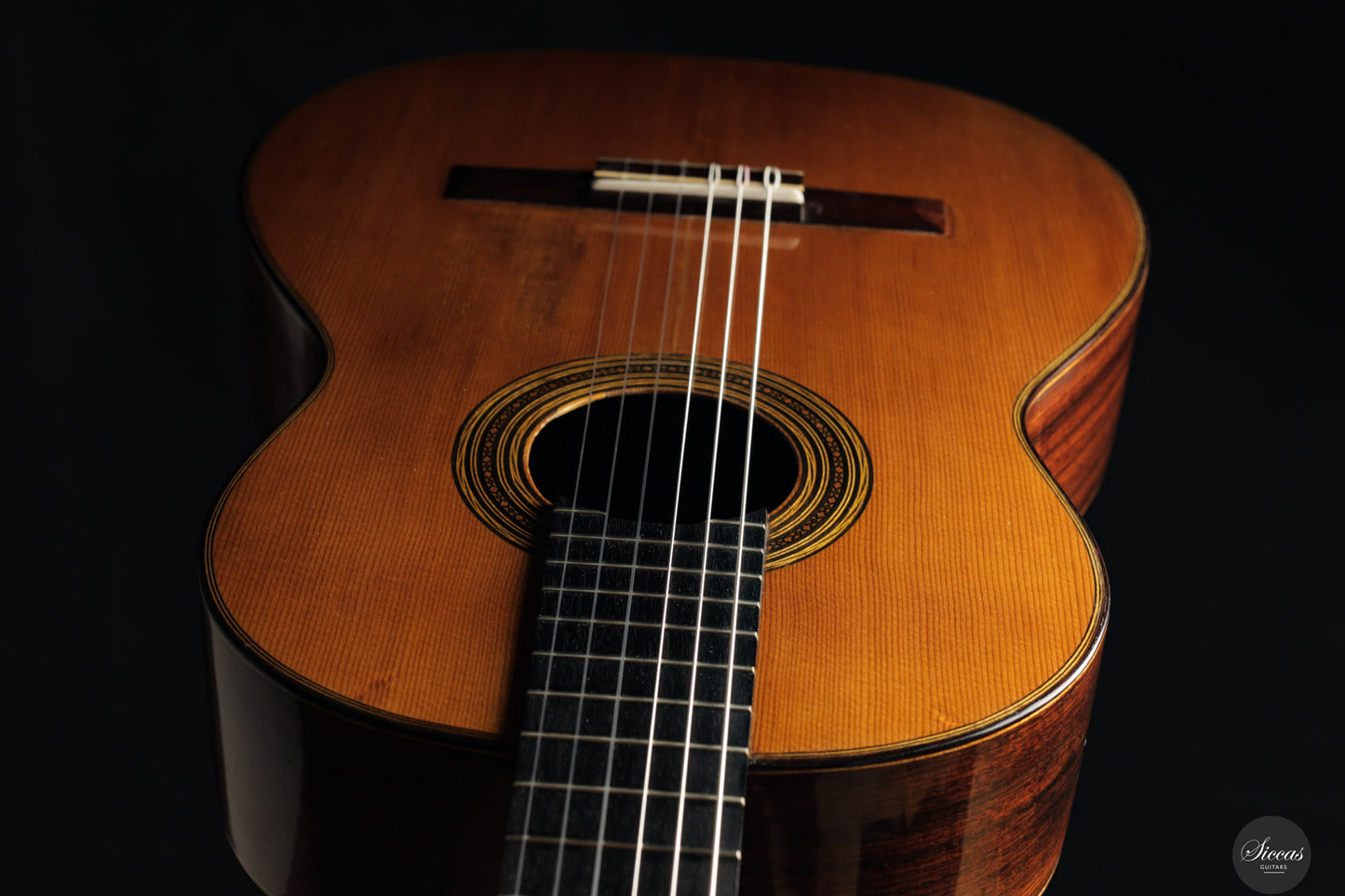
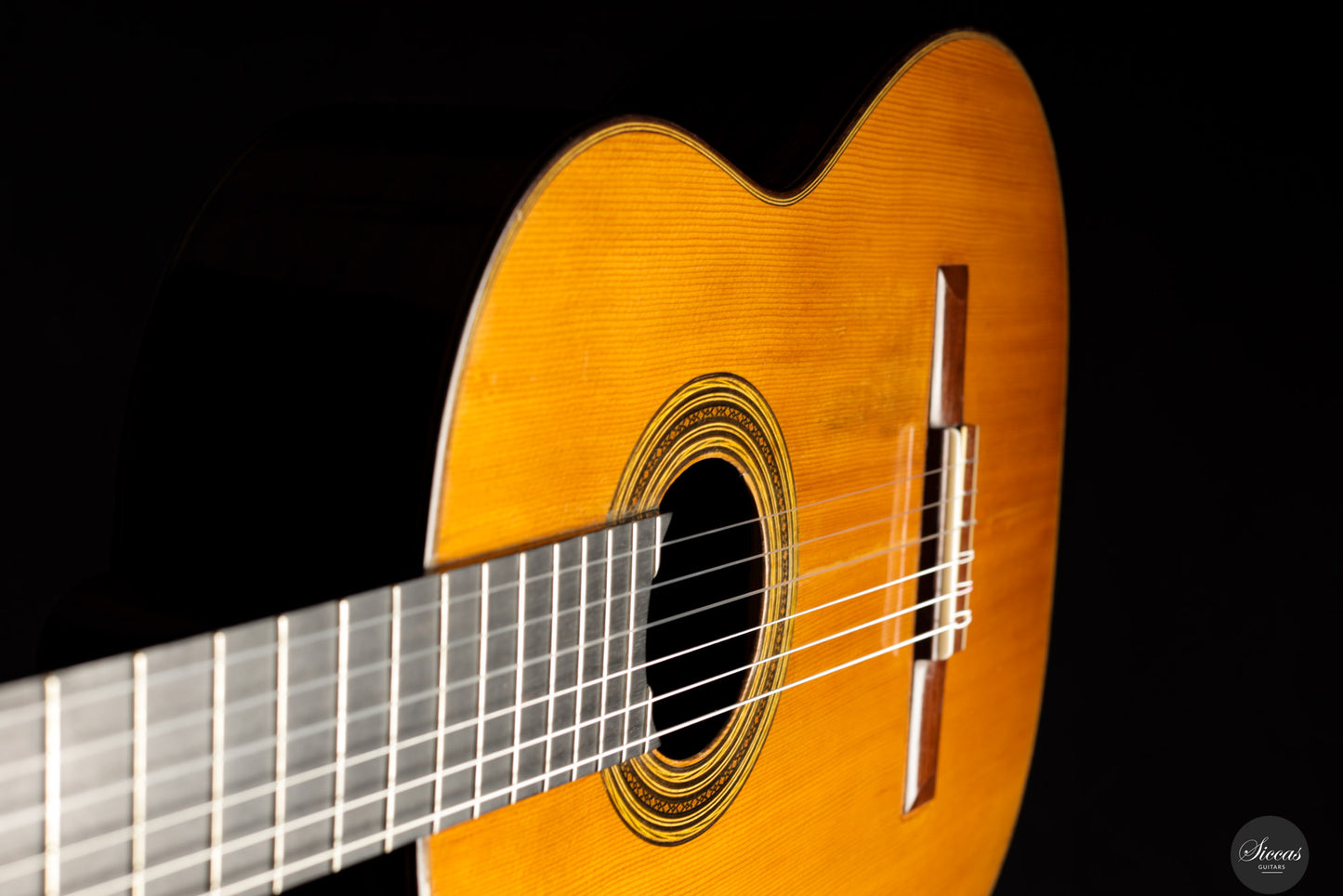
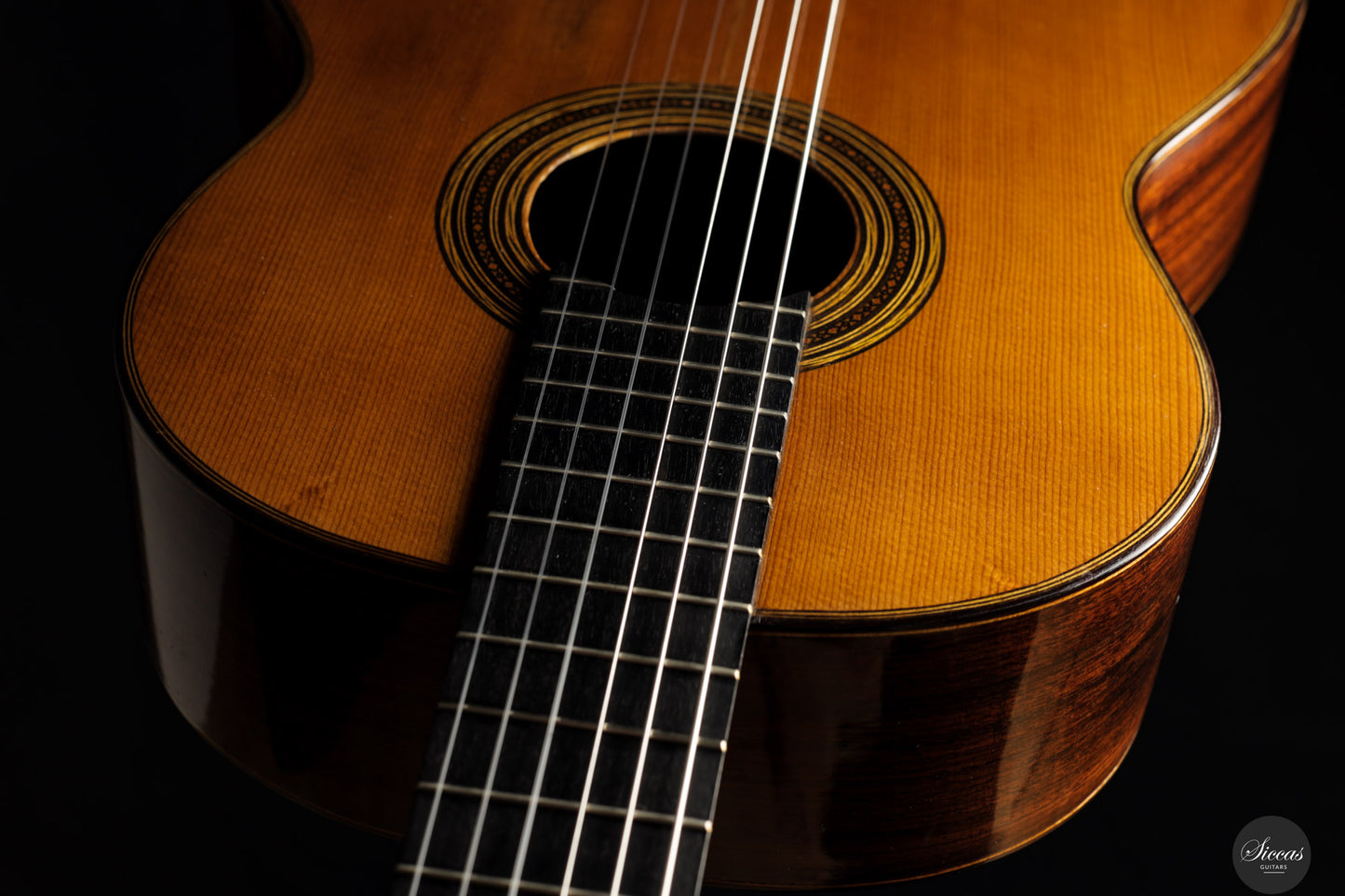
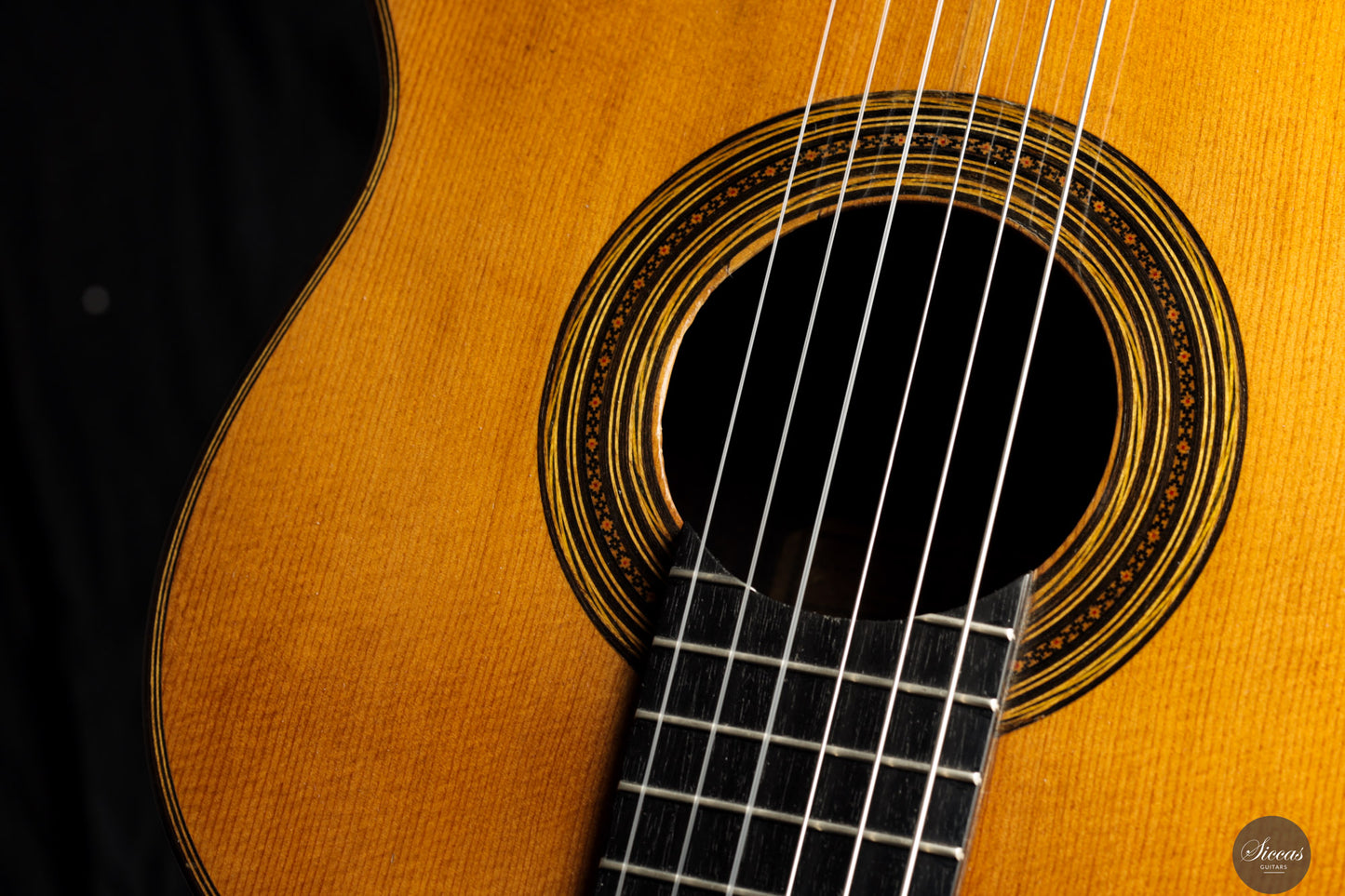
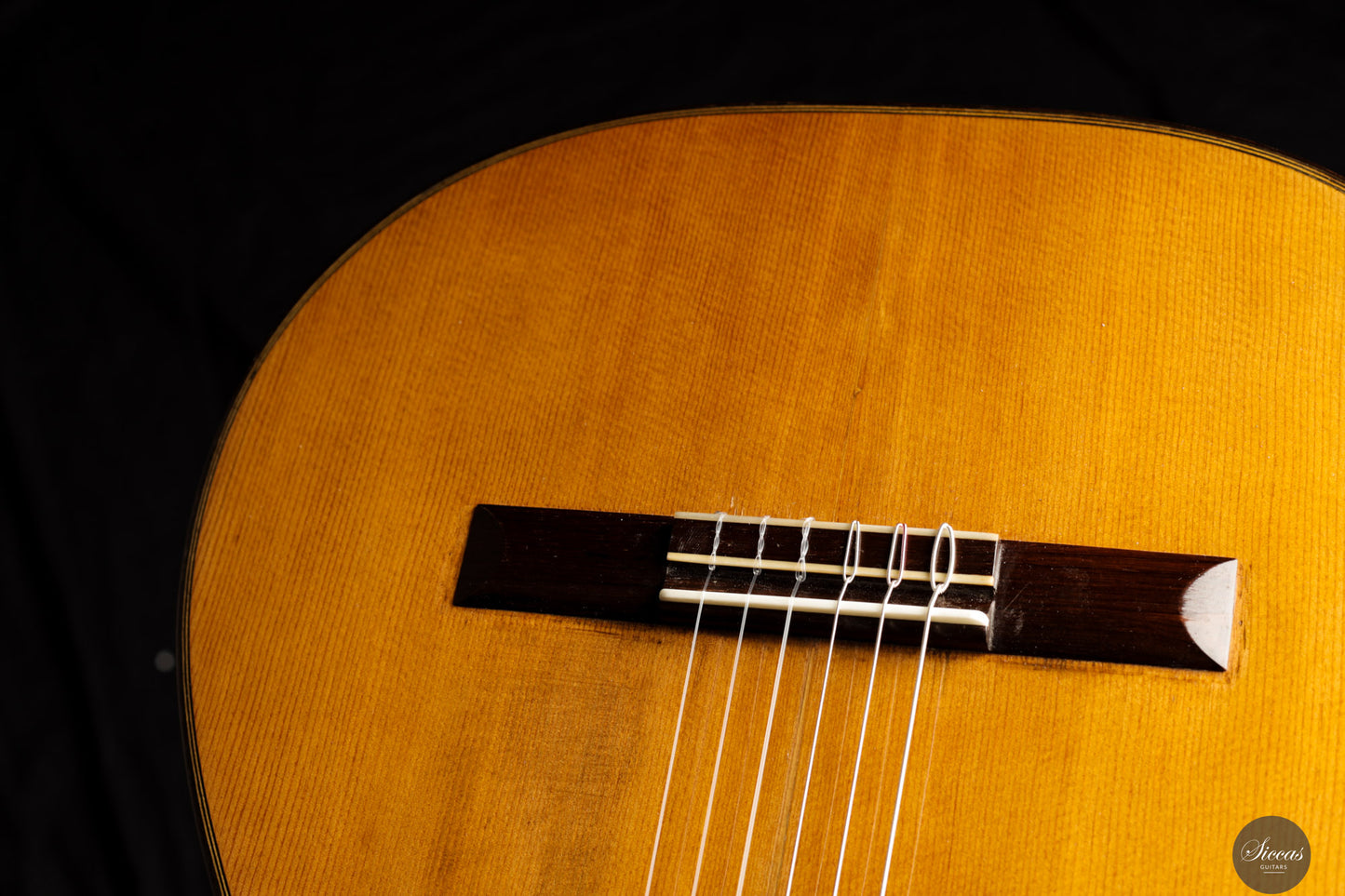
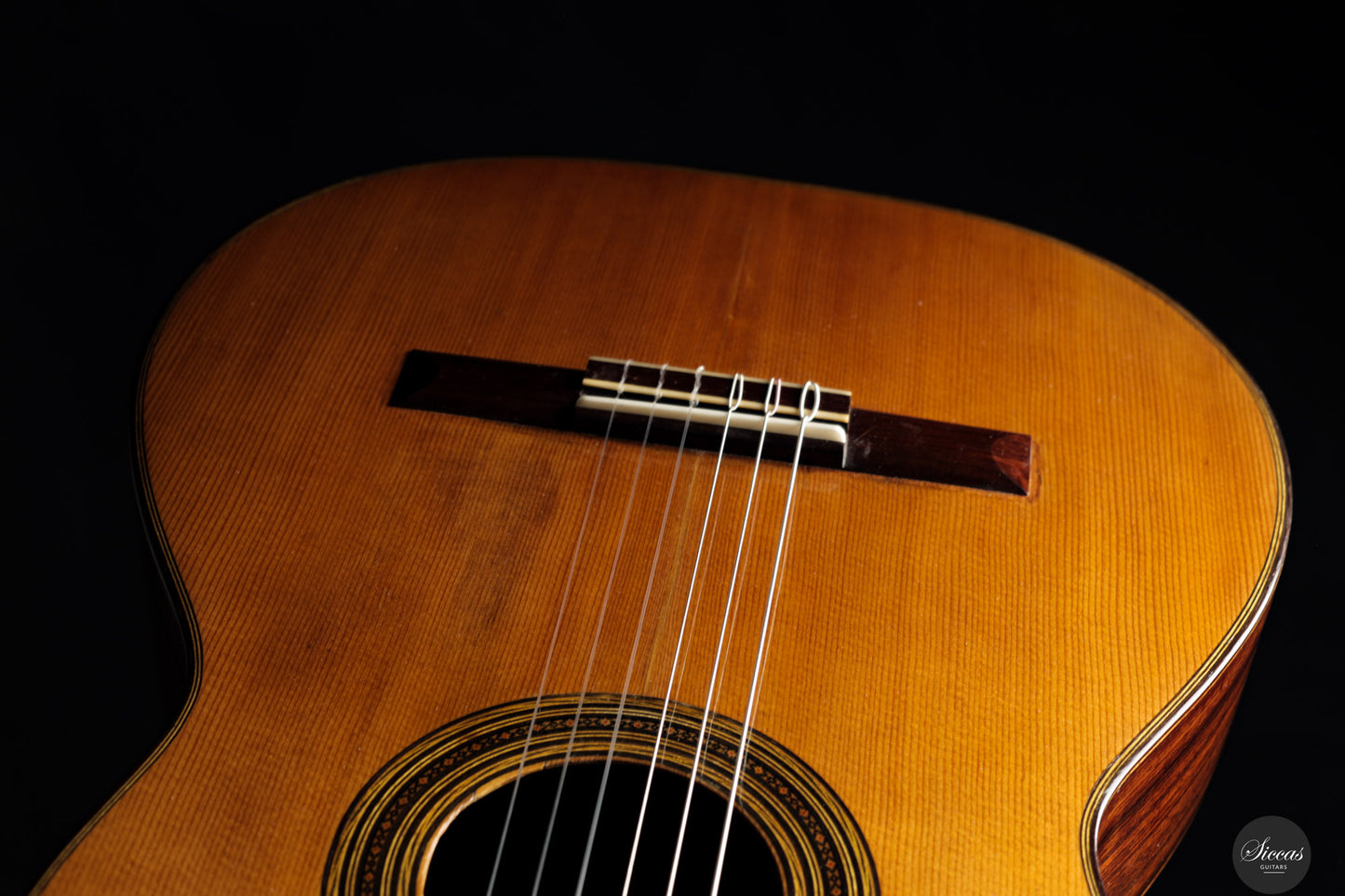
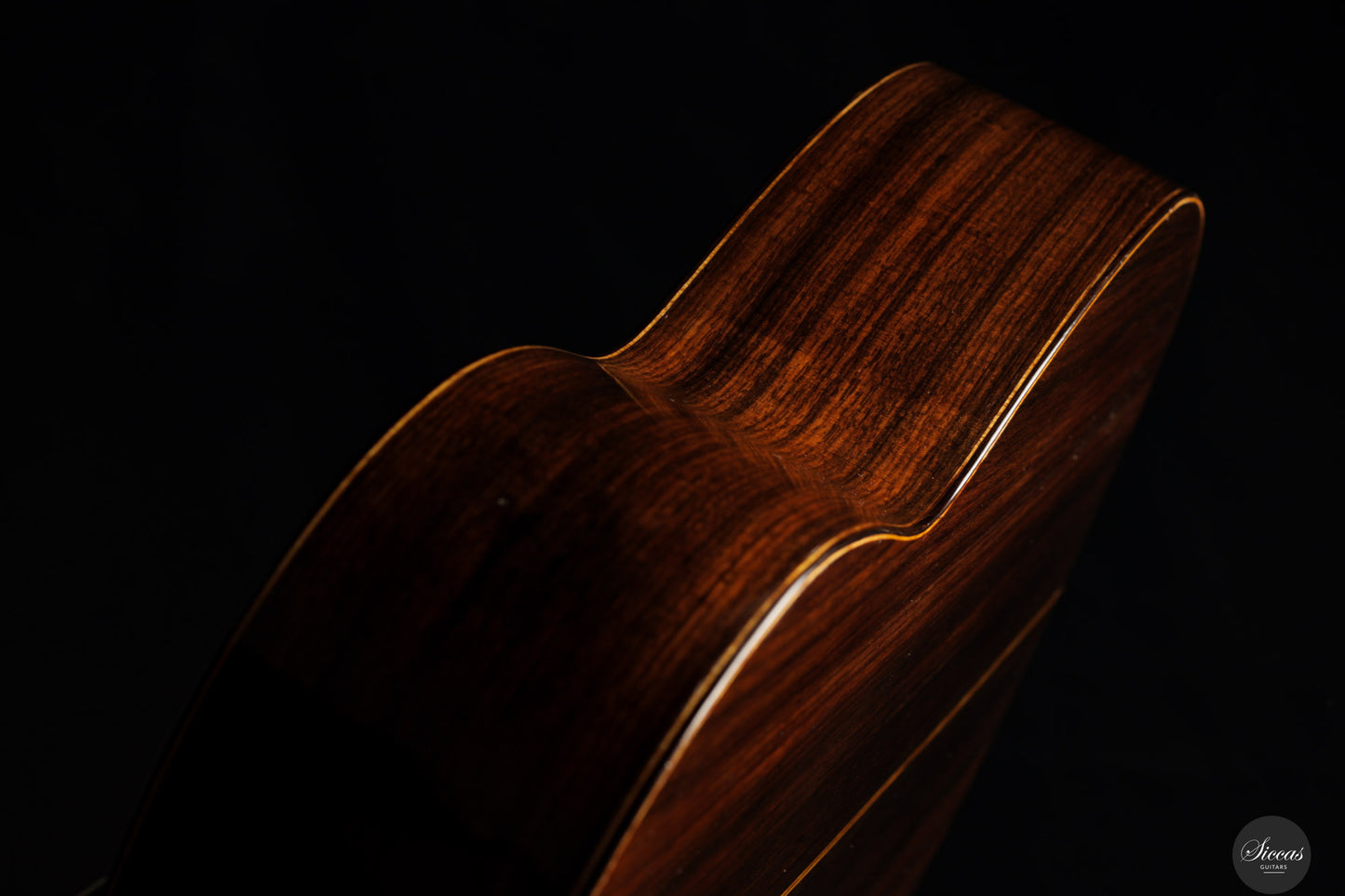
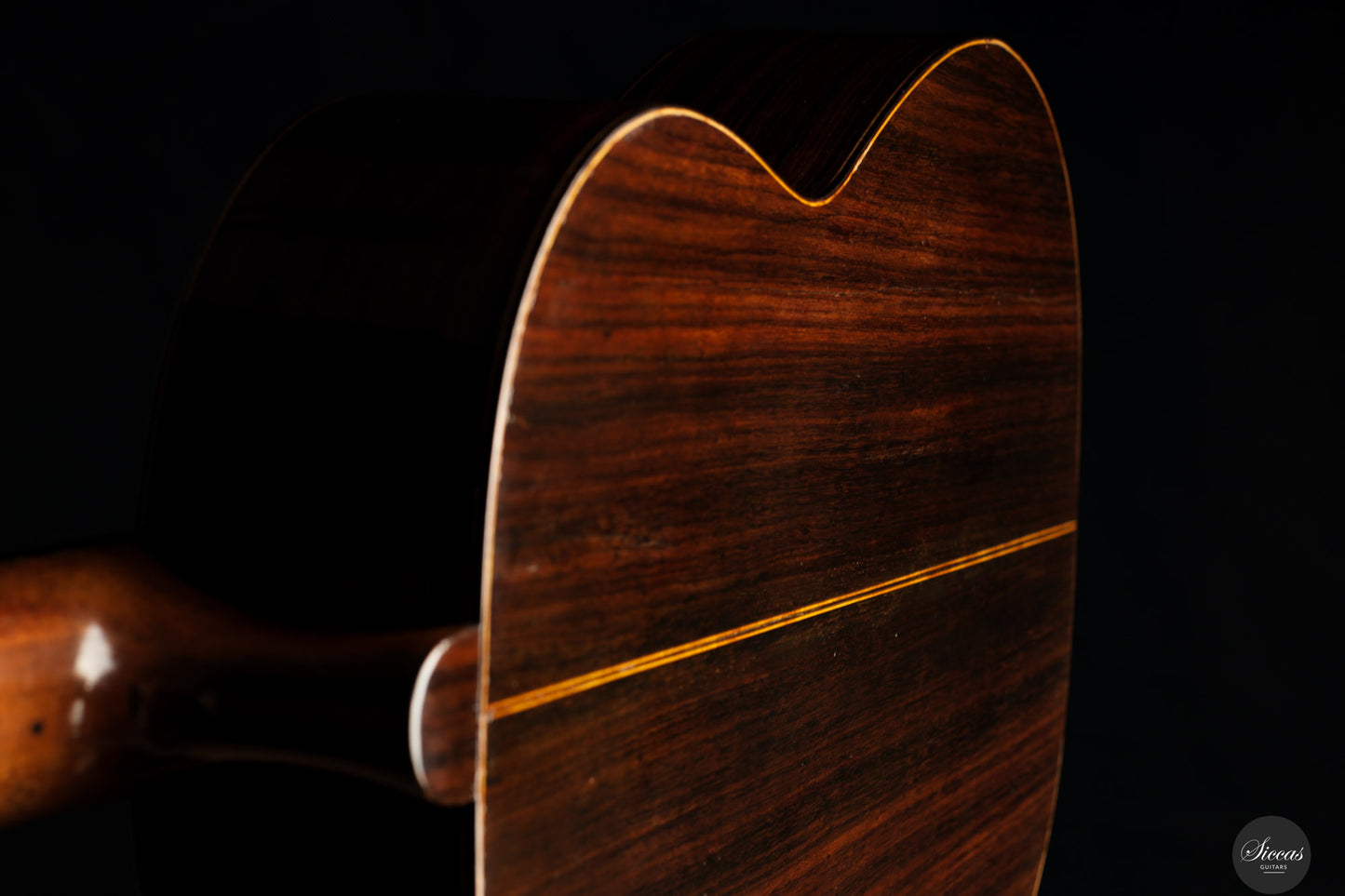
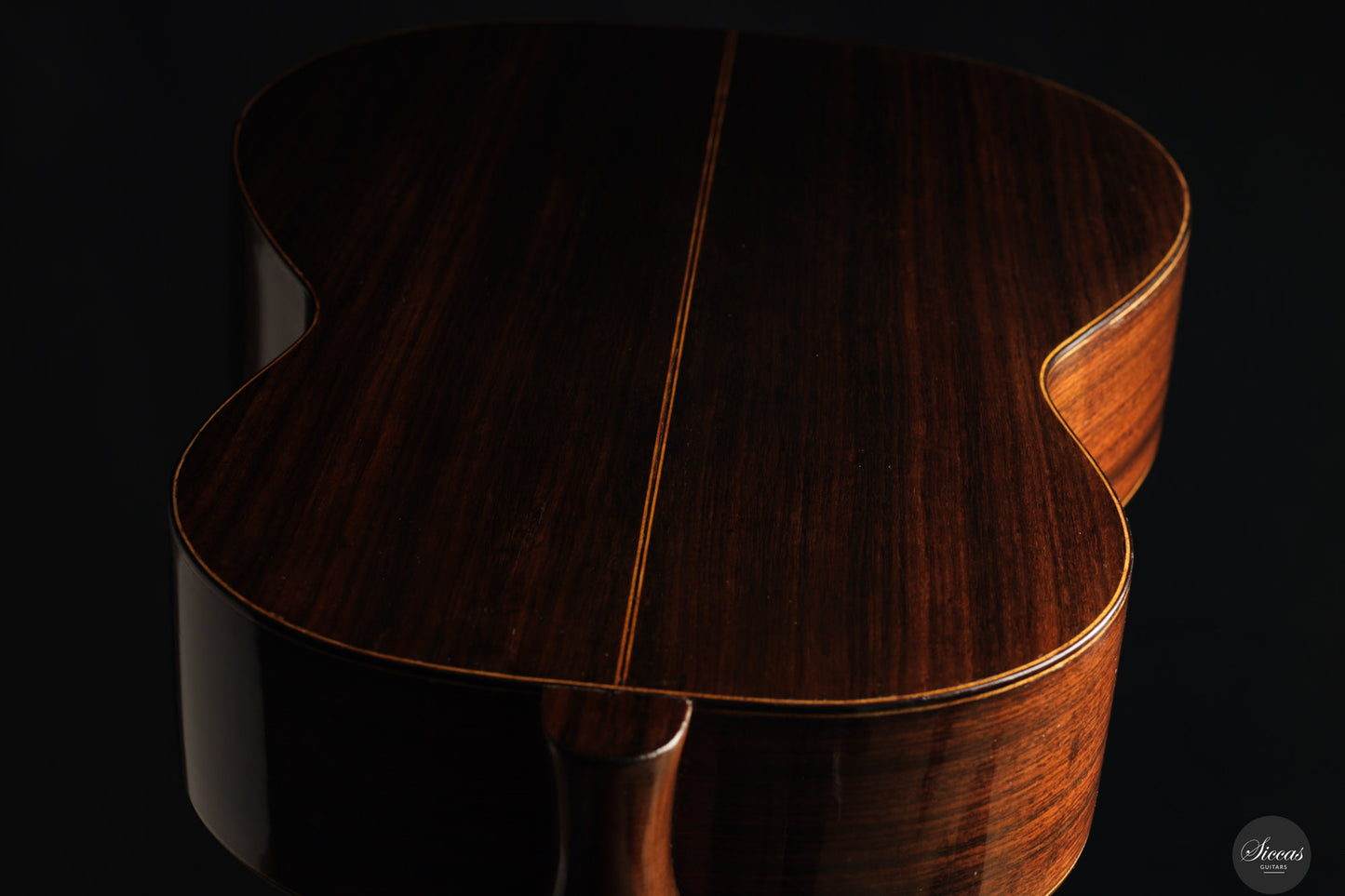
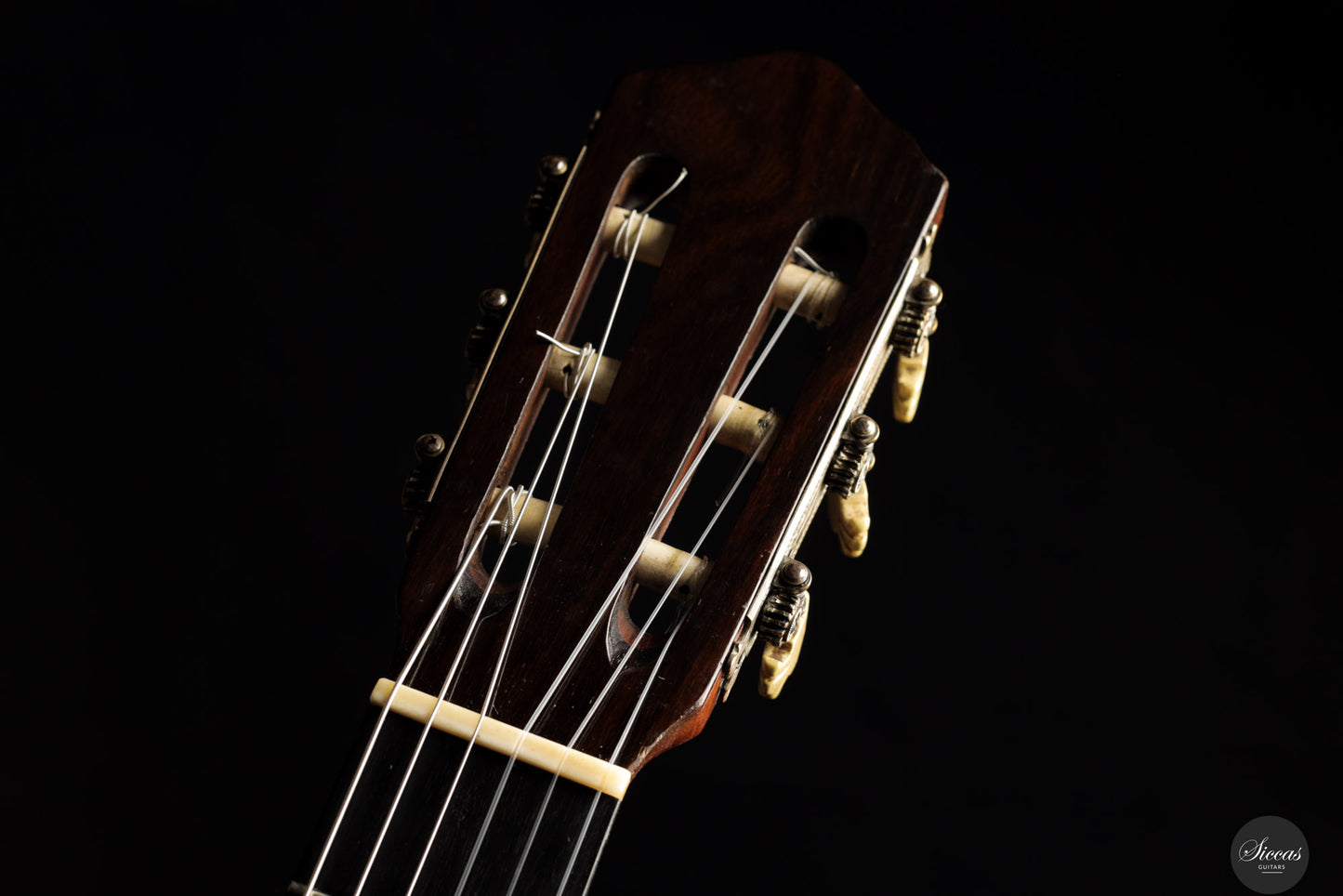
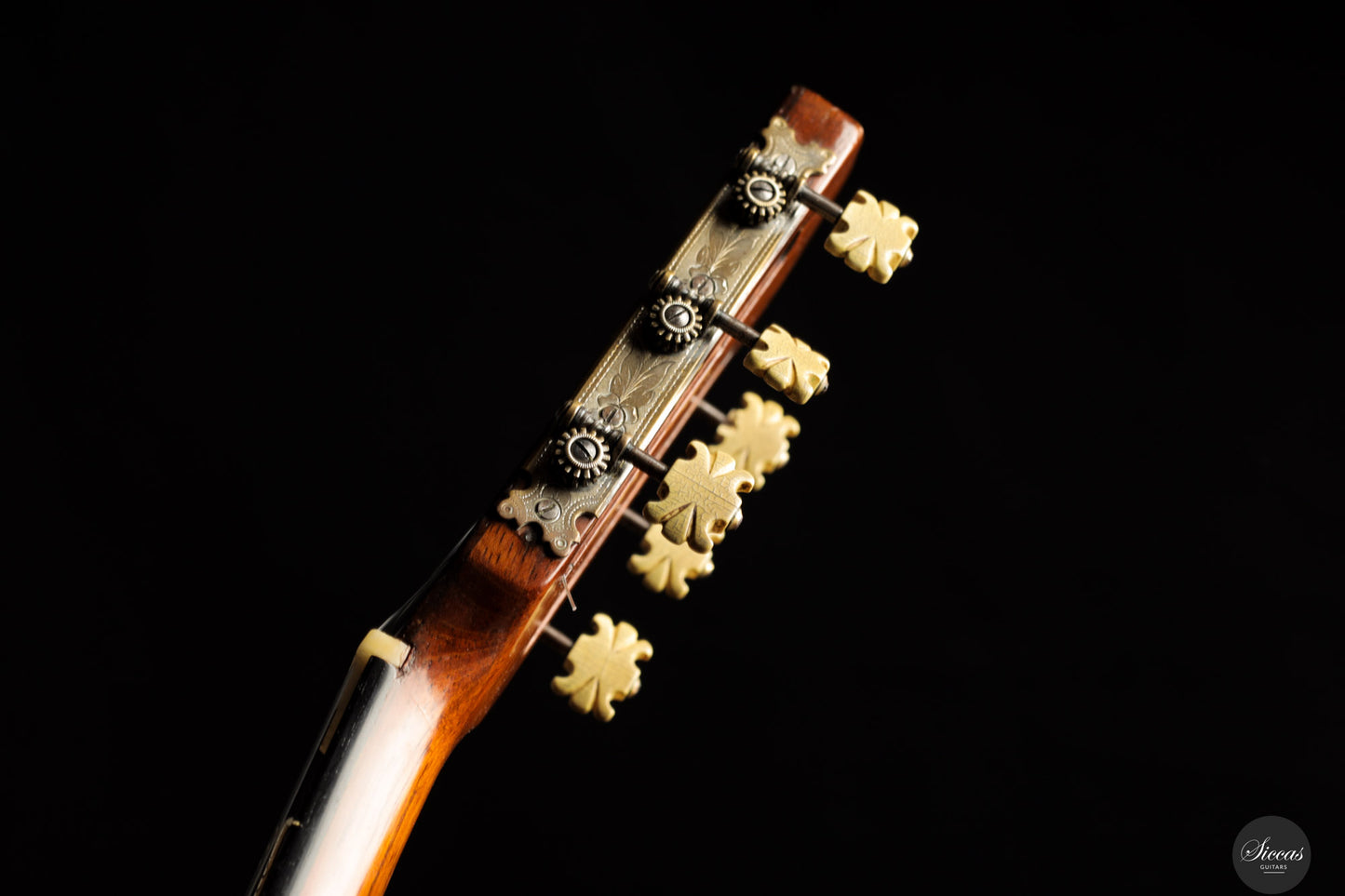
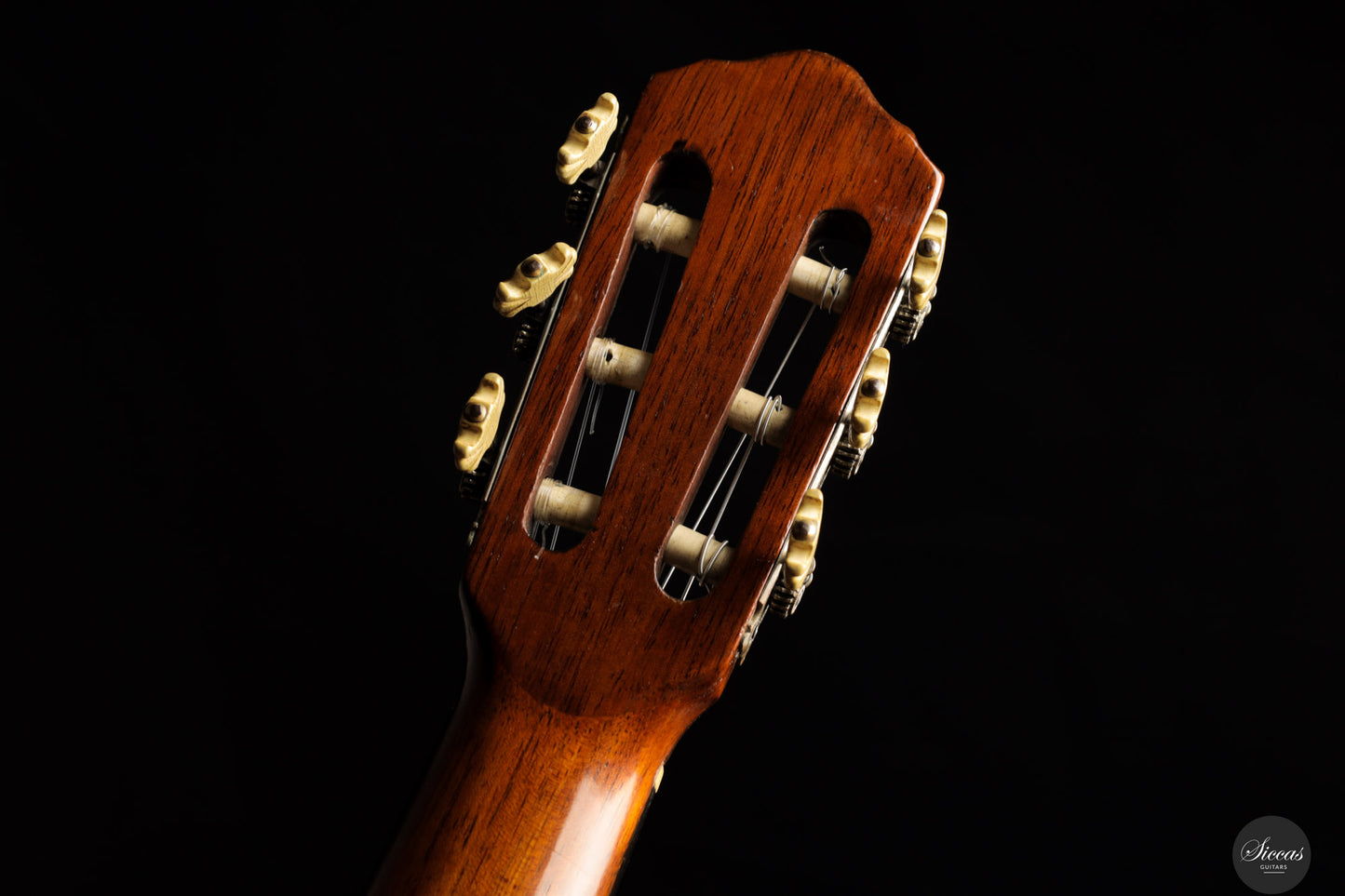
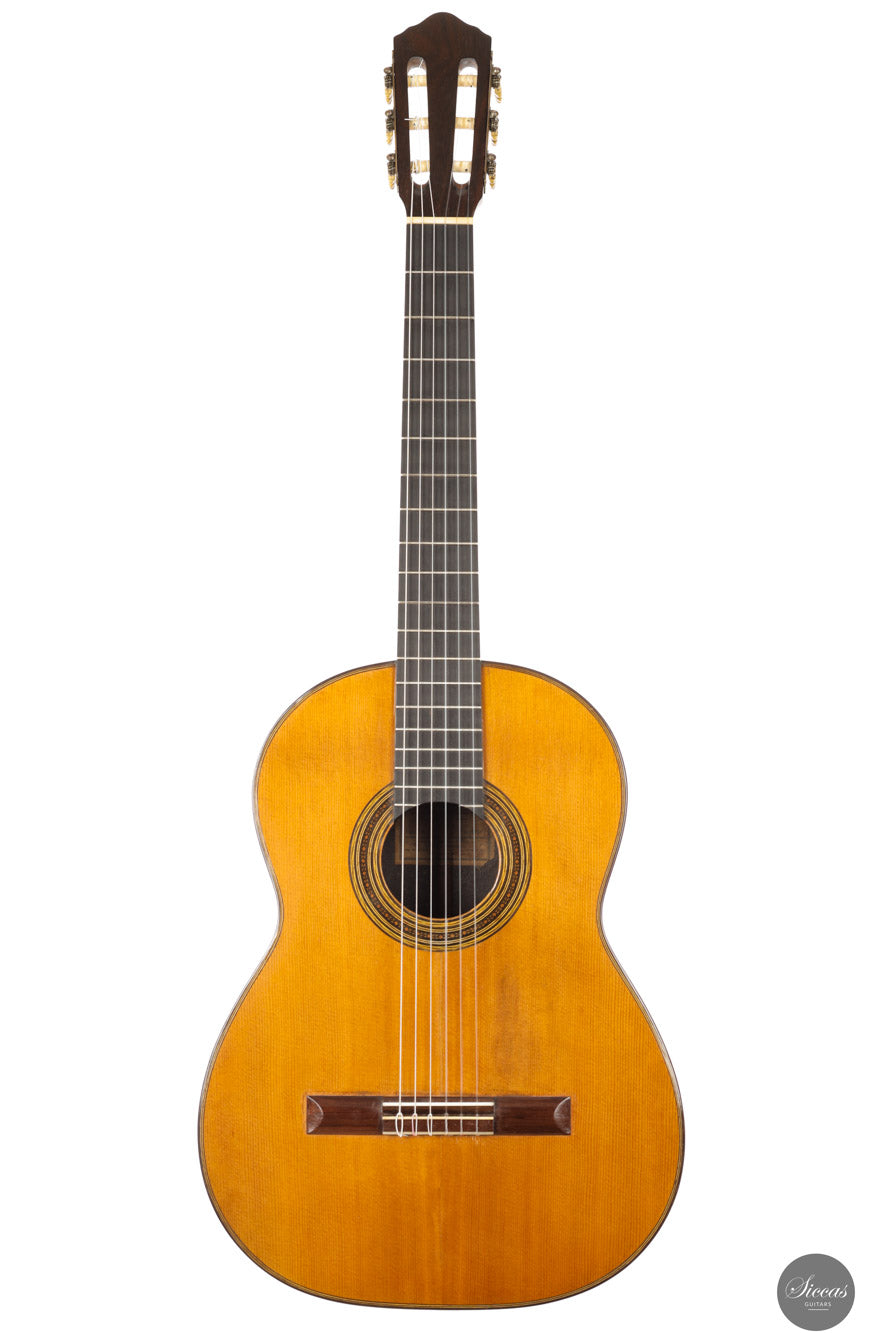
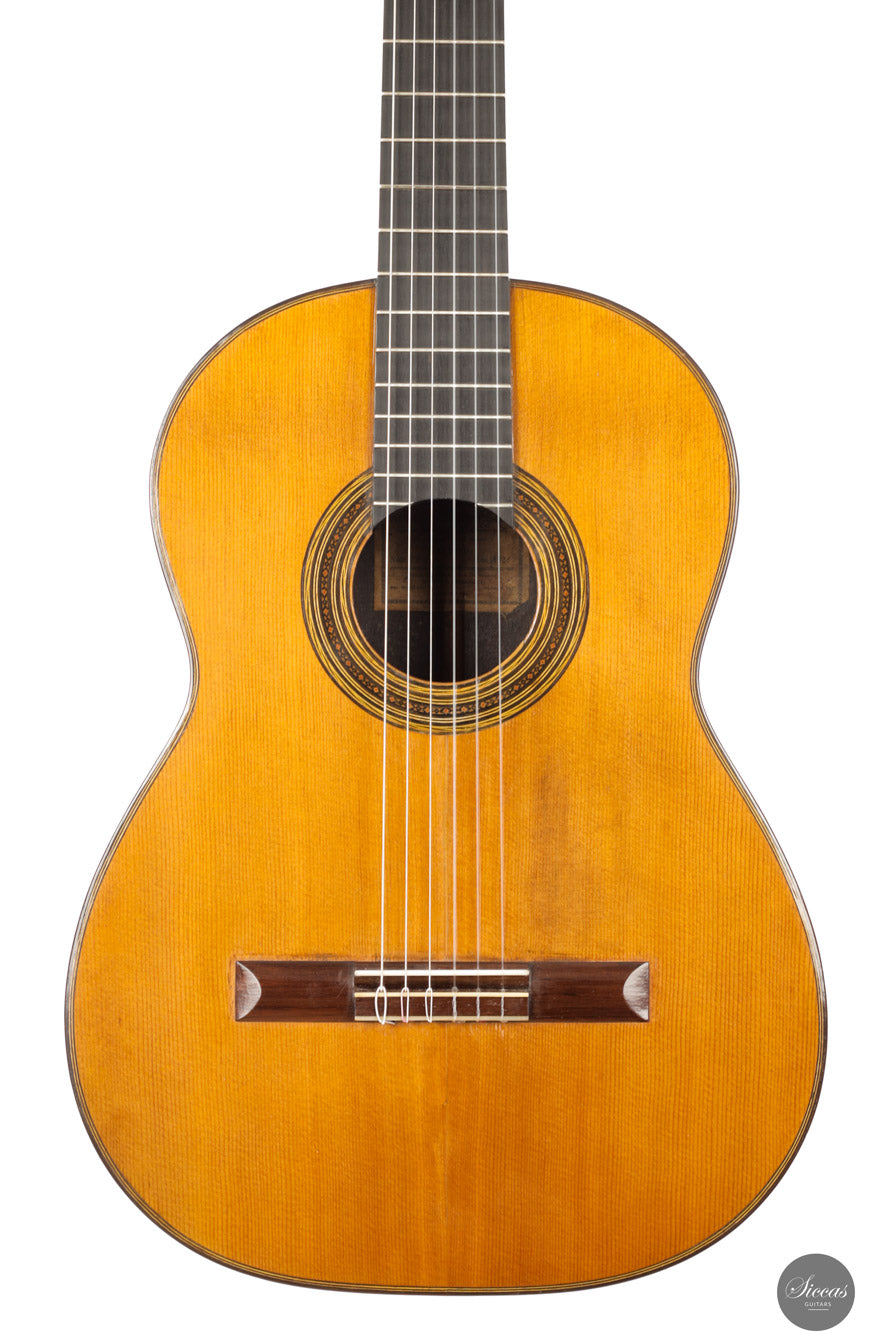
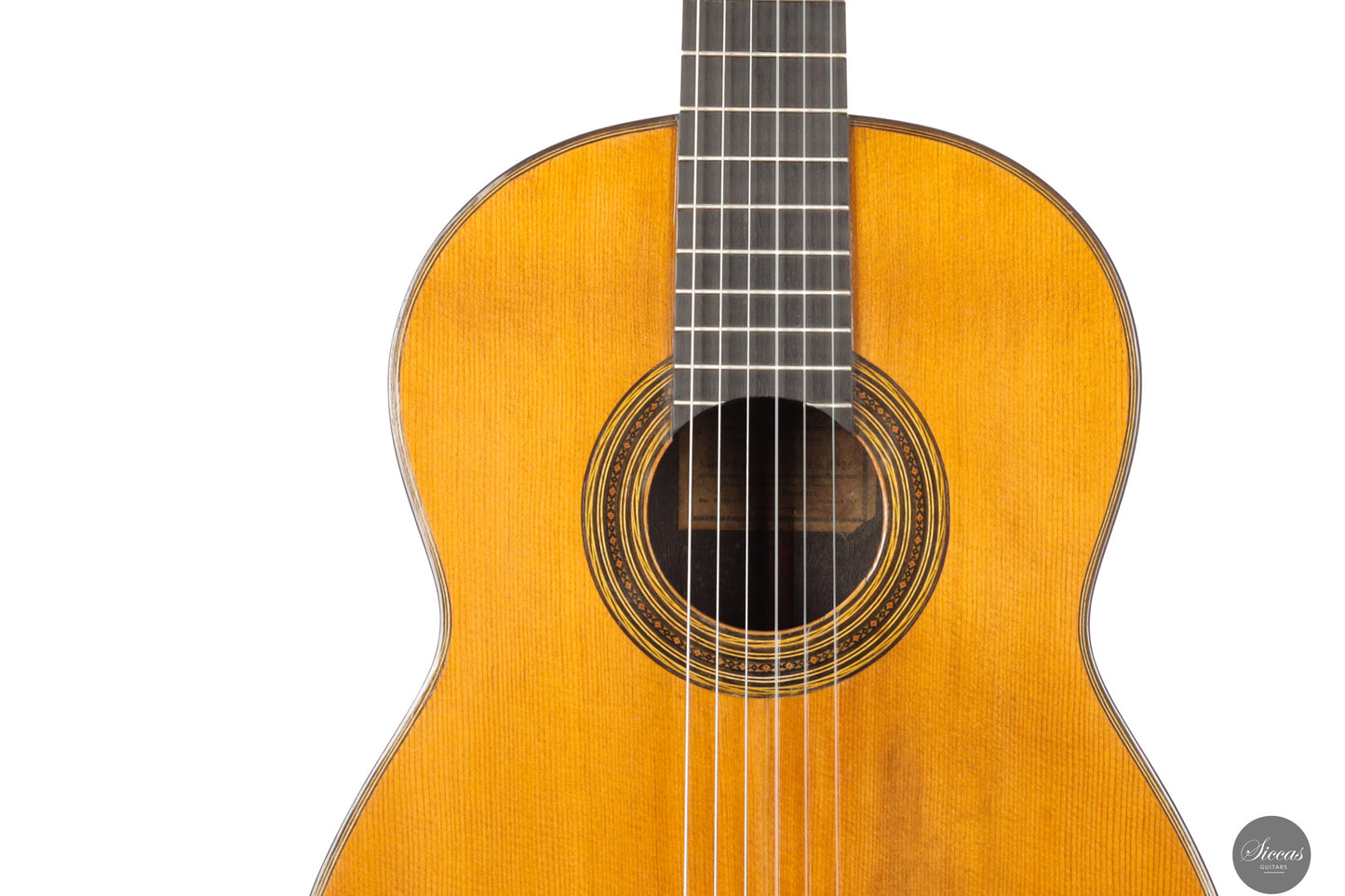
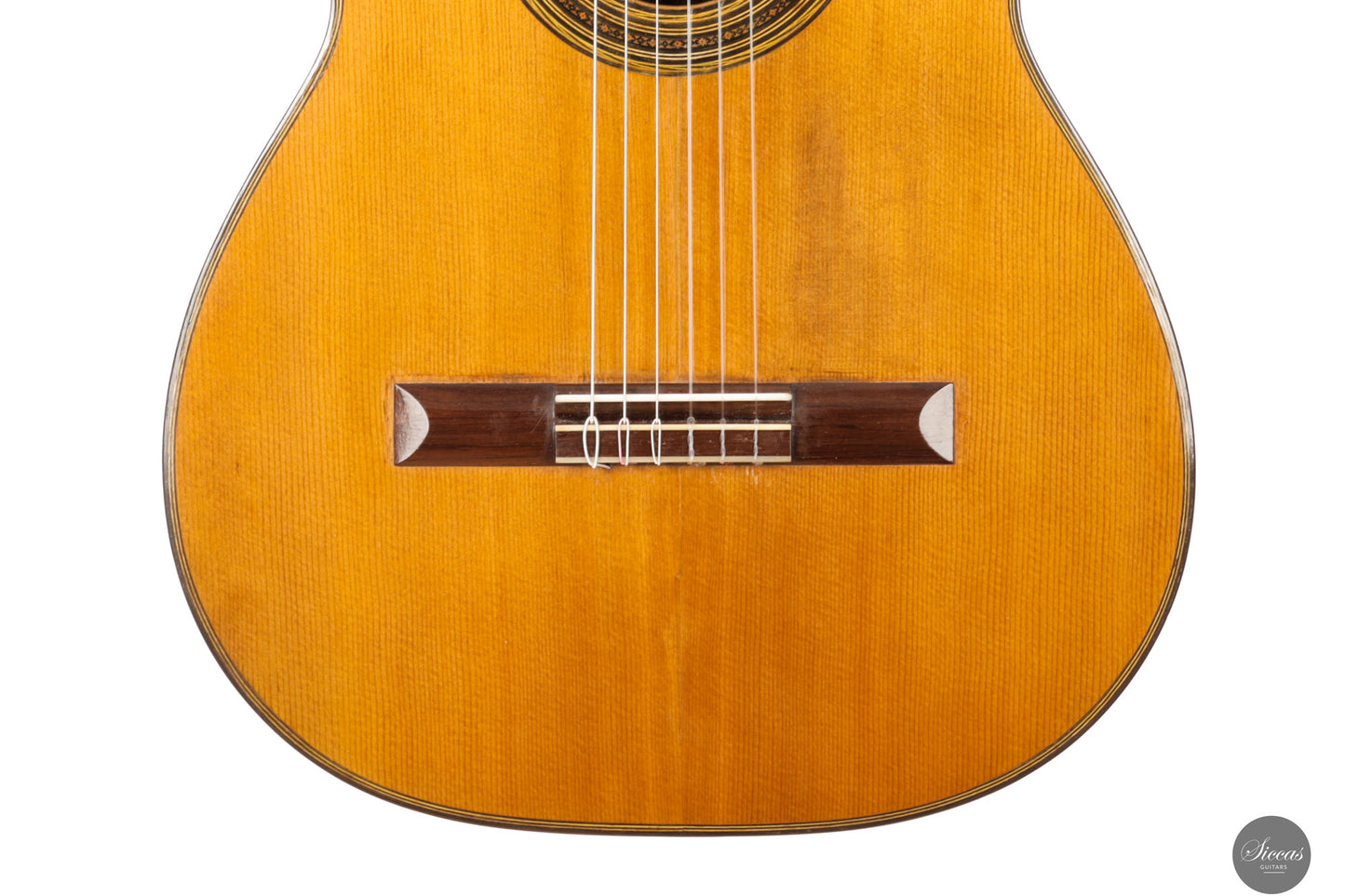
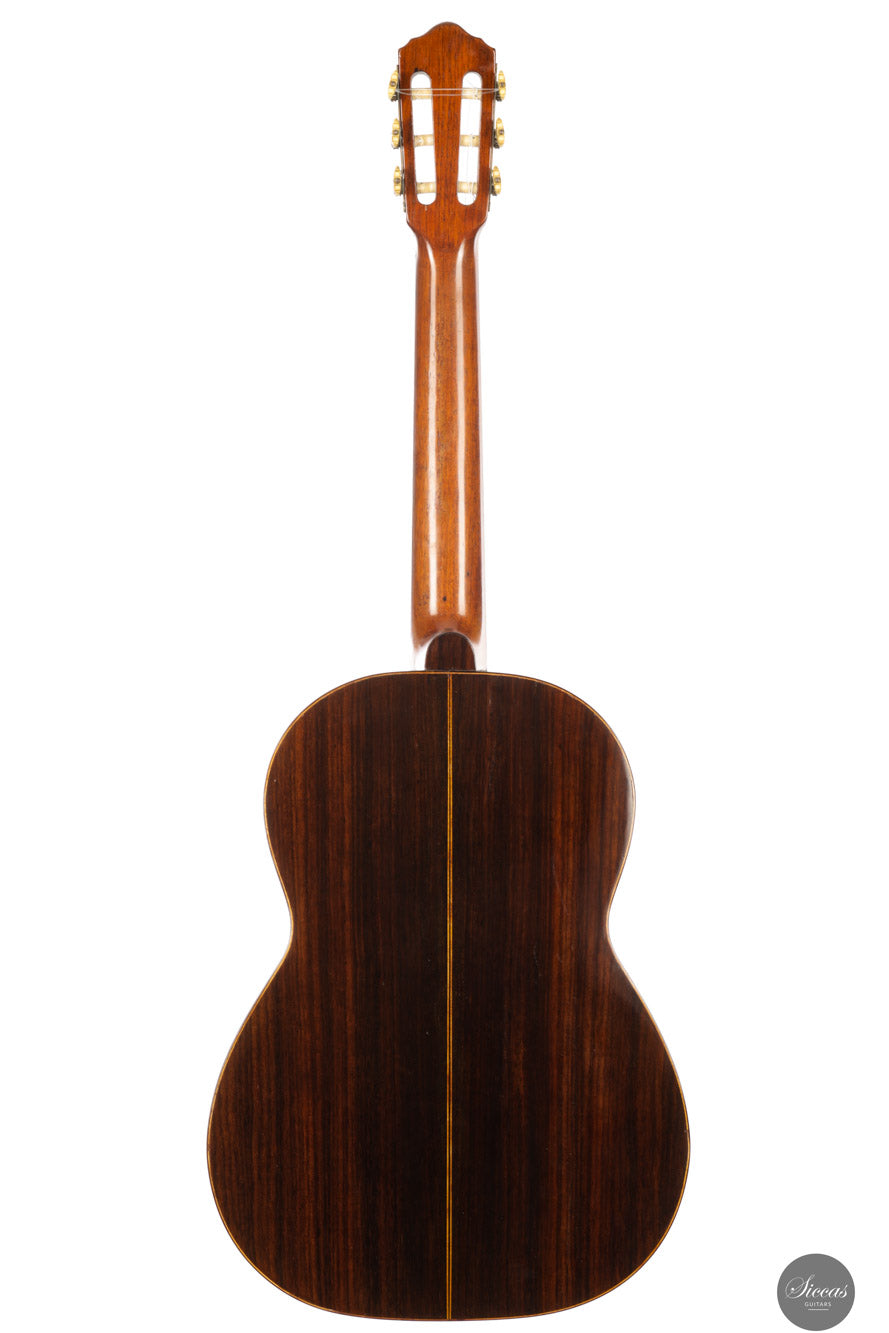
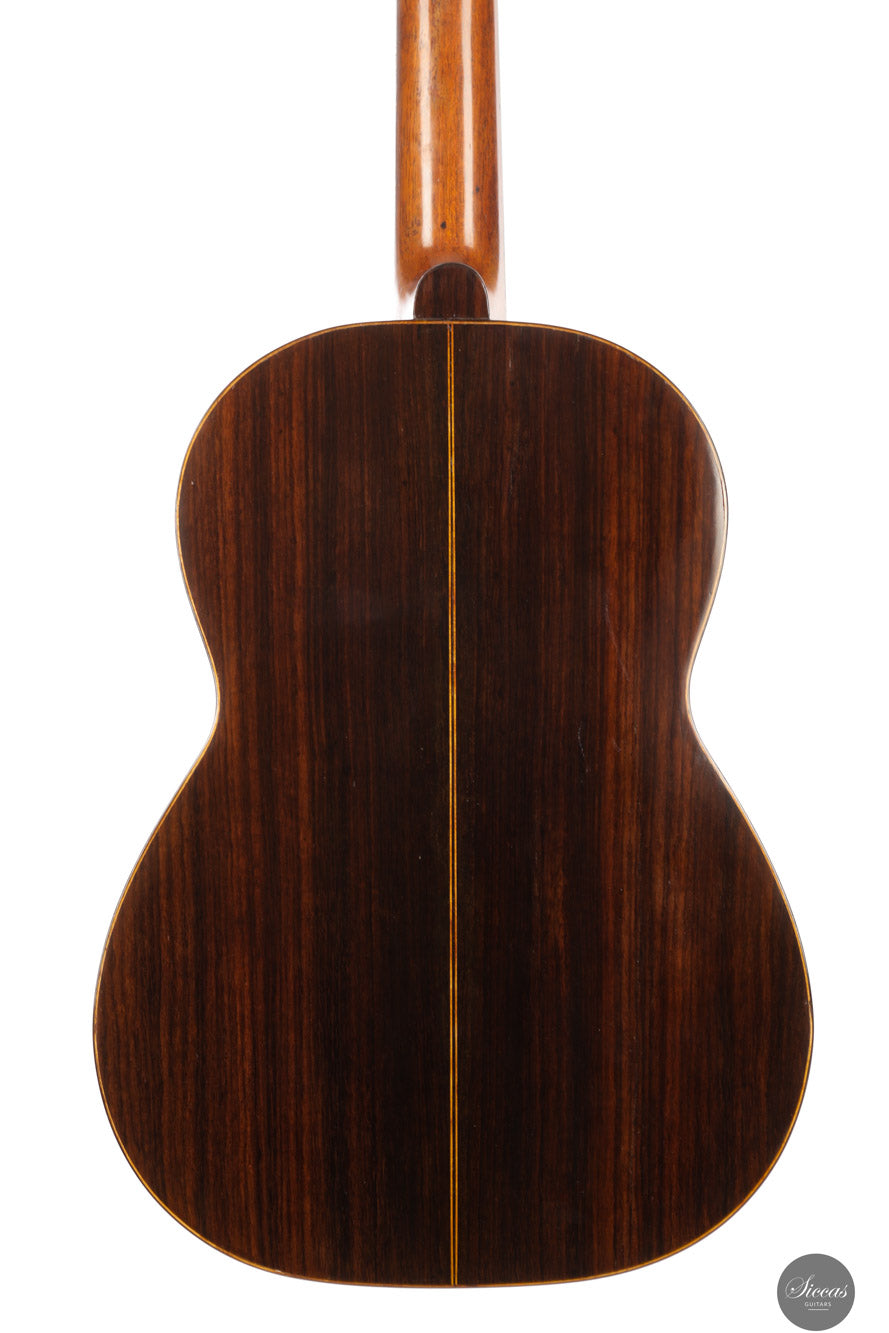
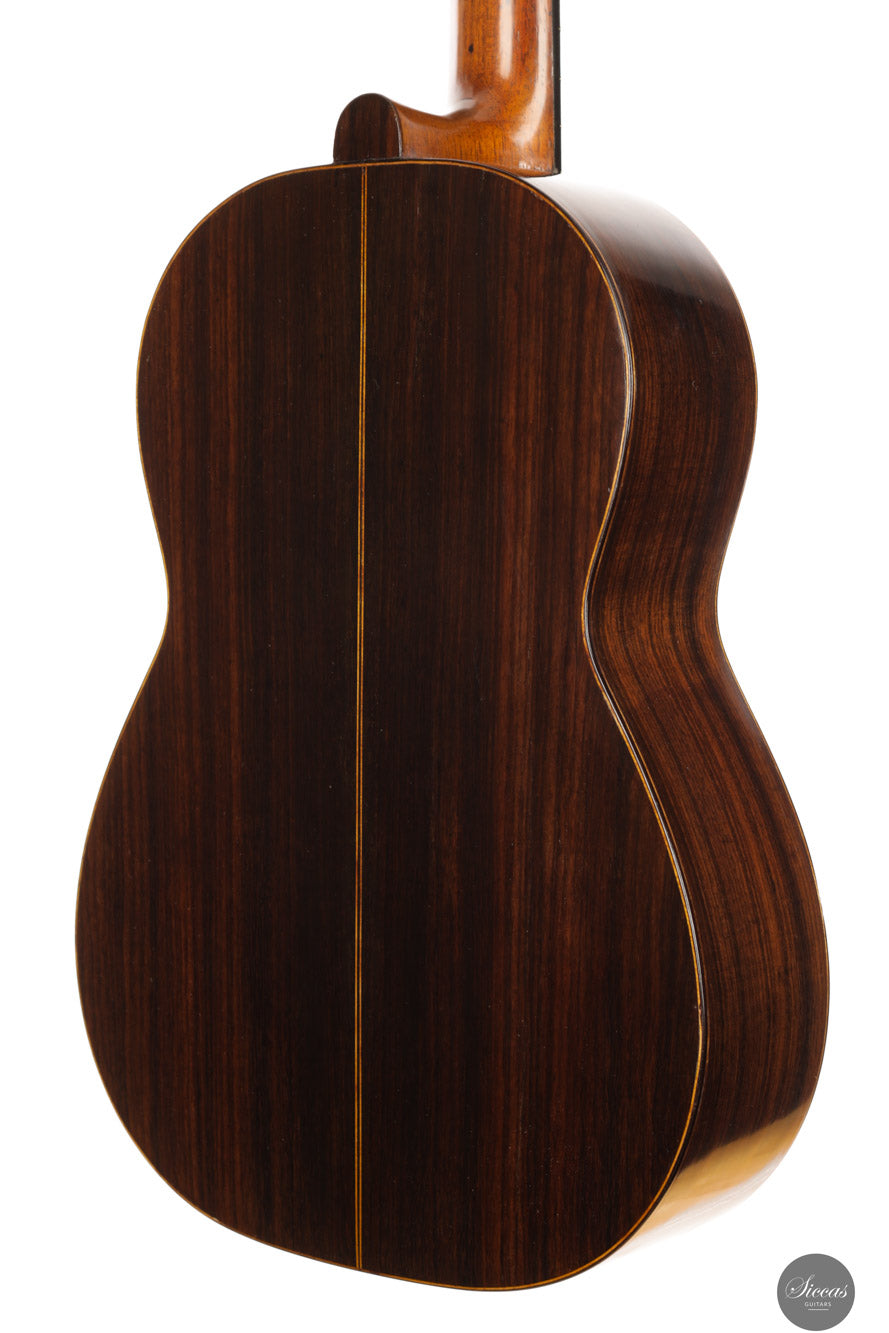
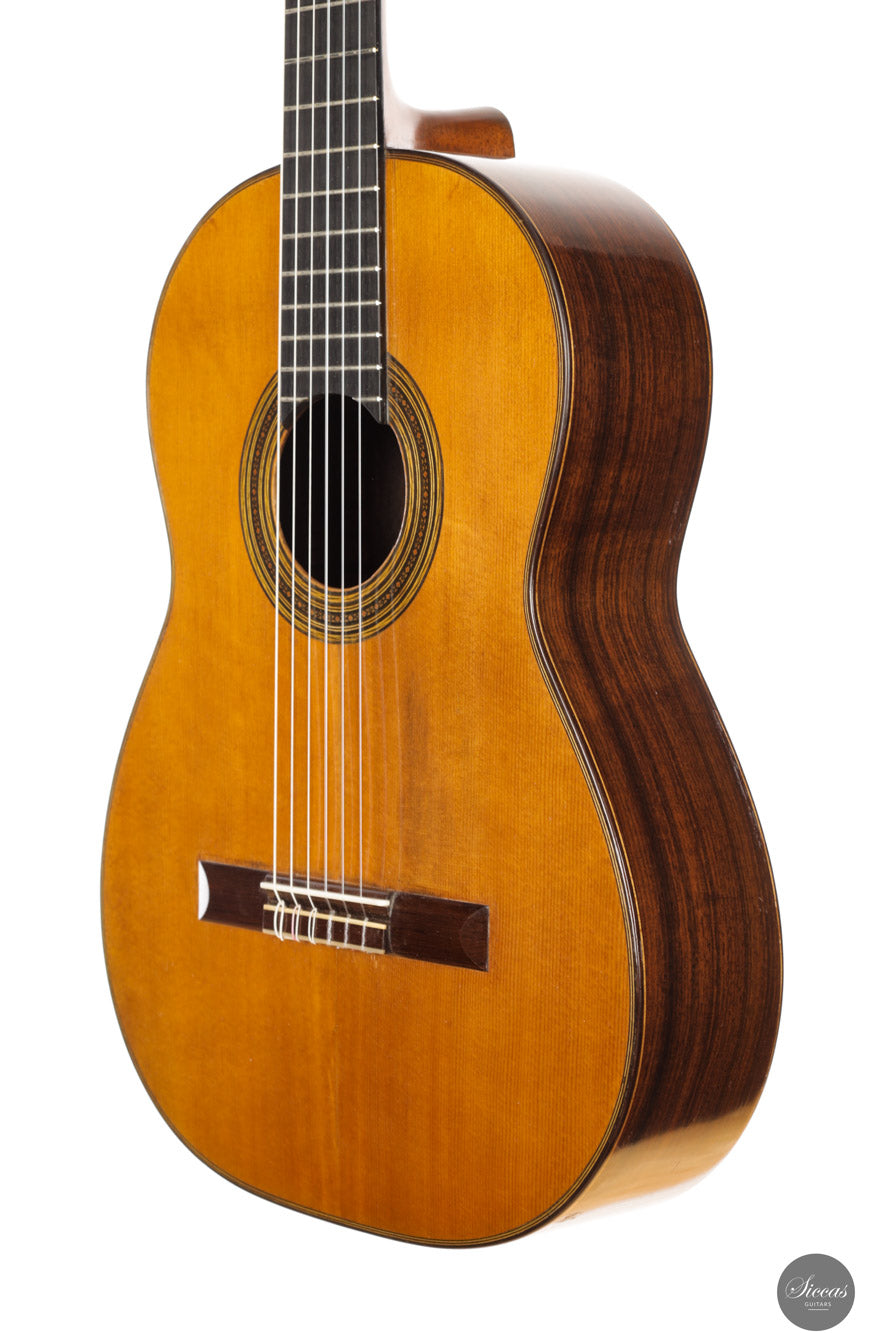
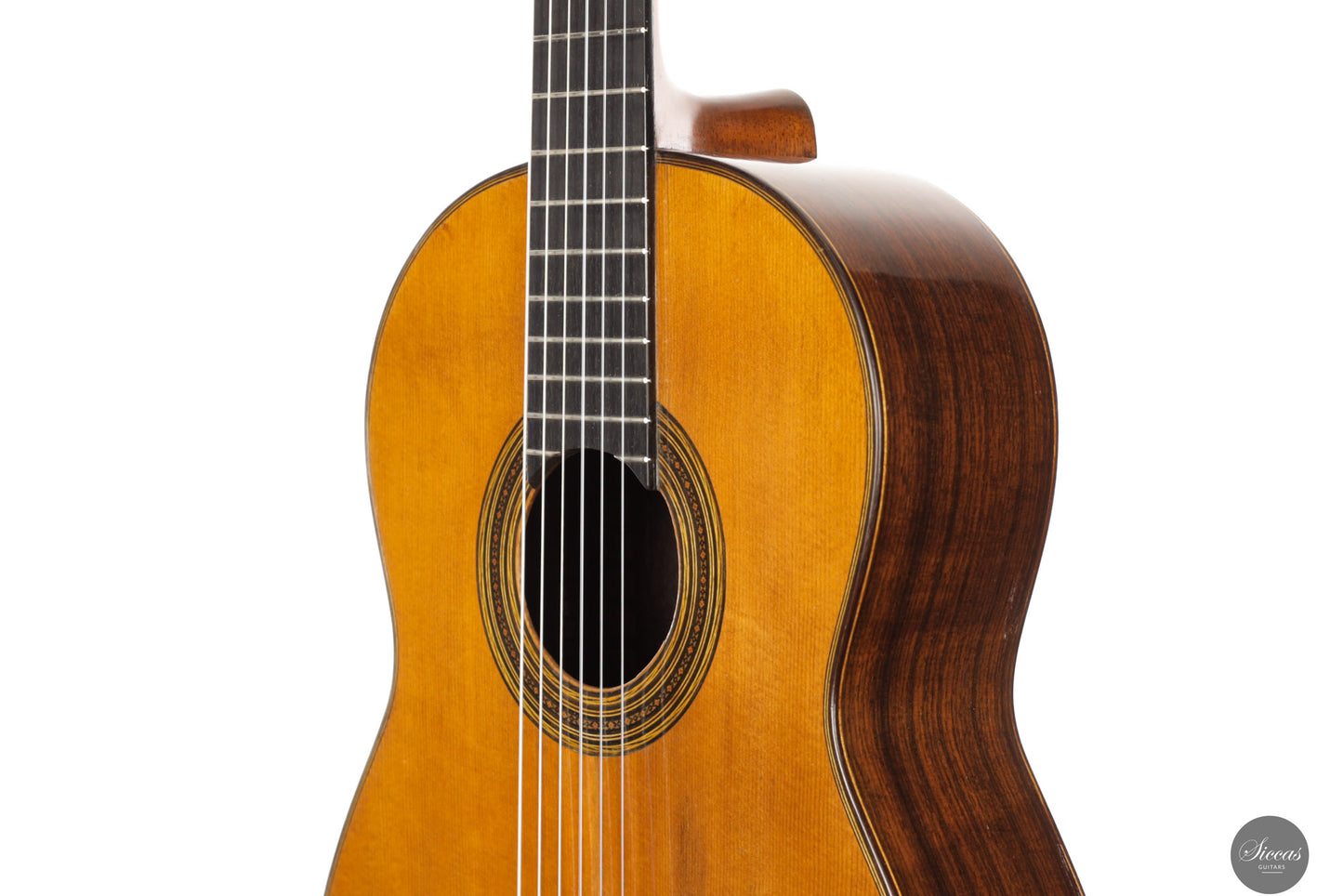
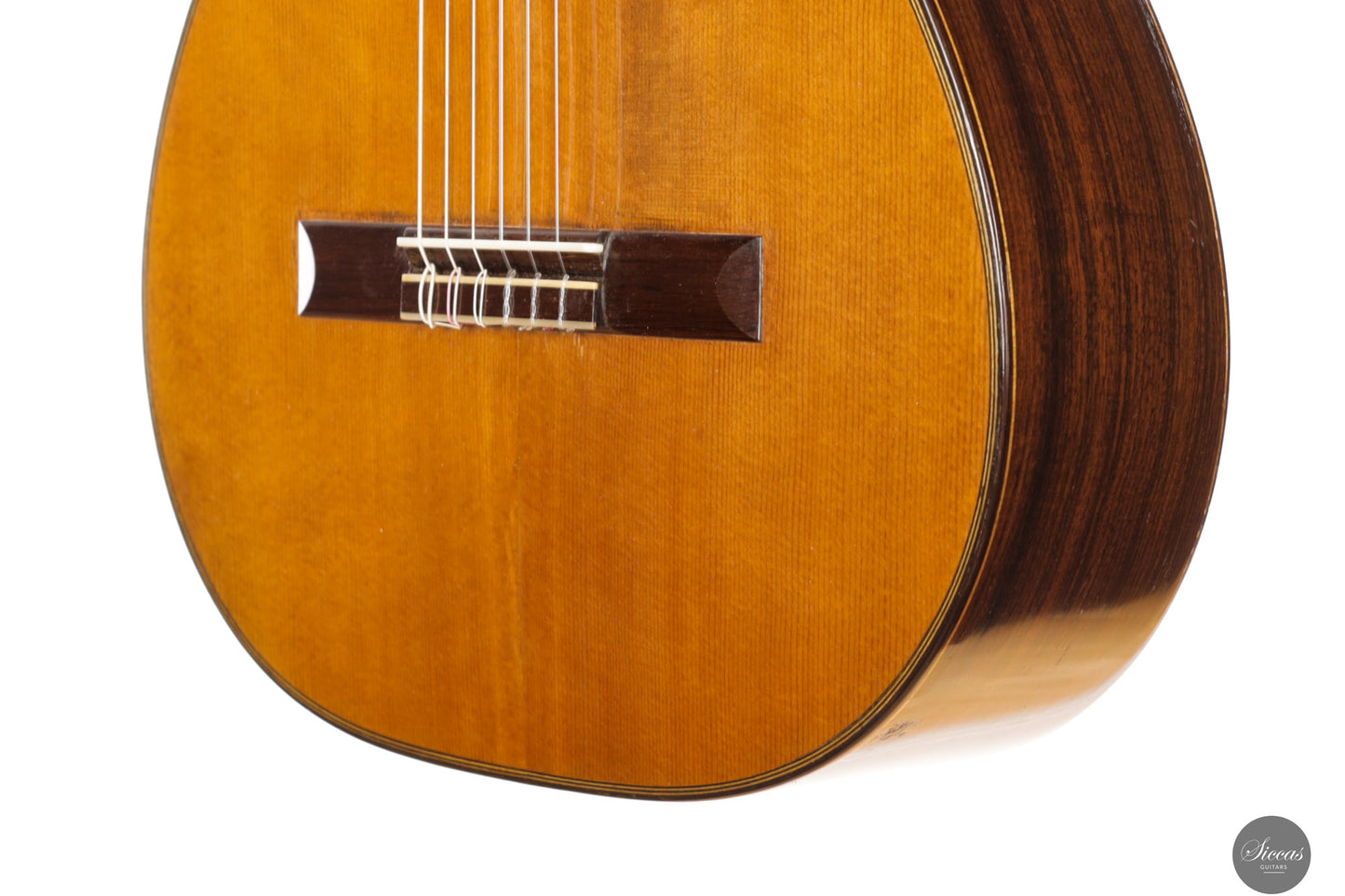
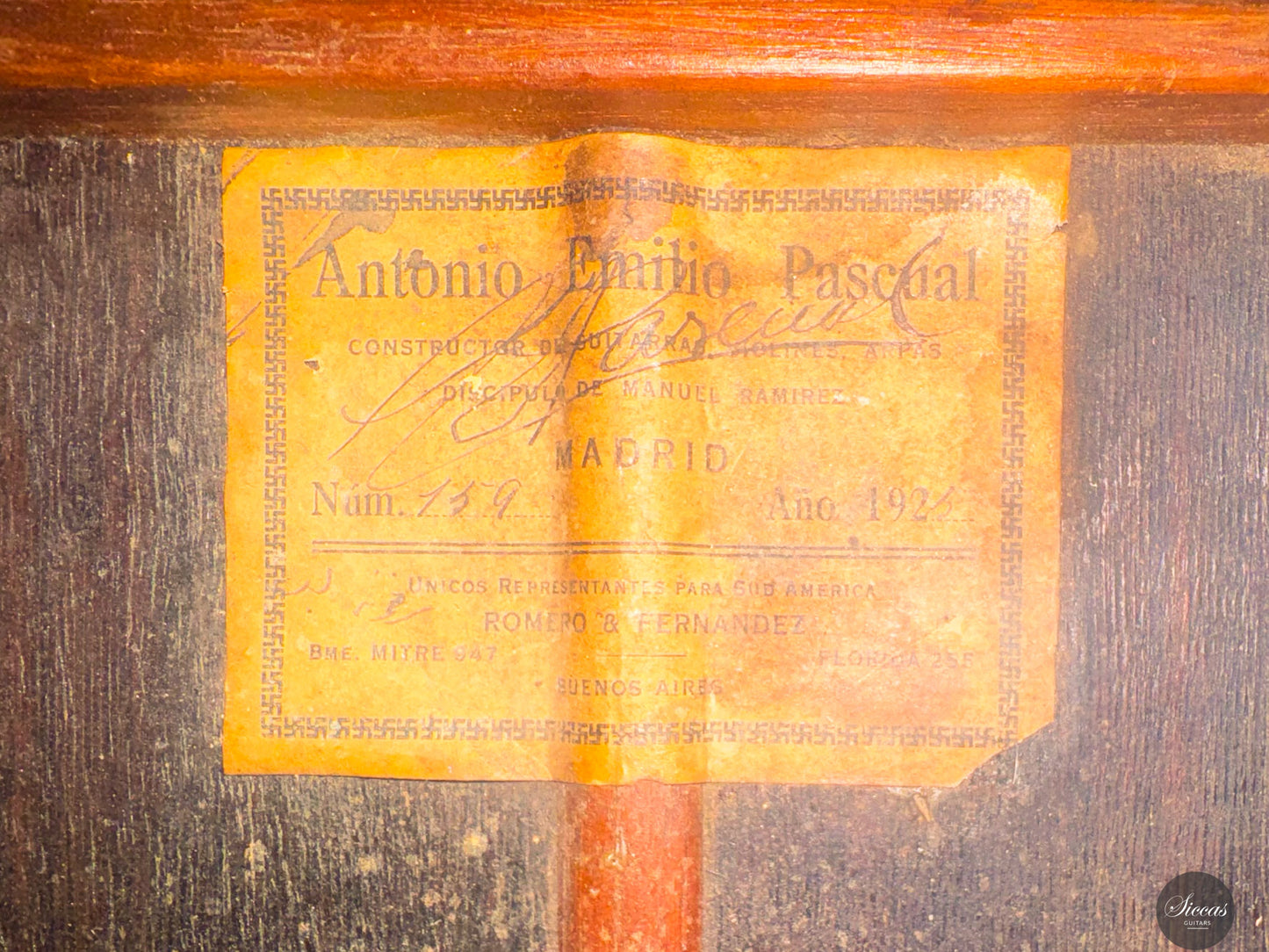
Video overview



































































